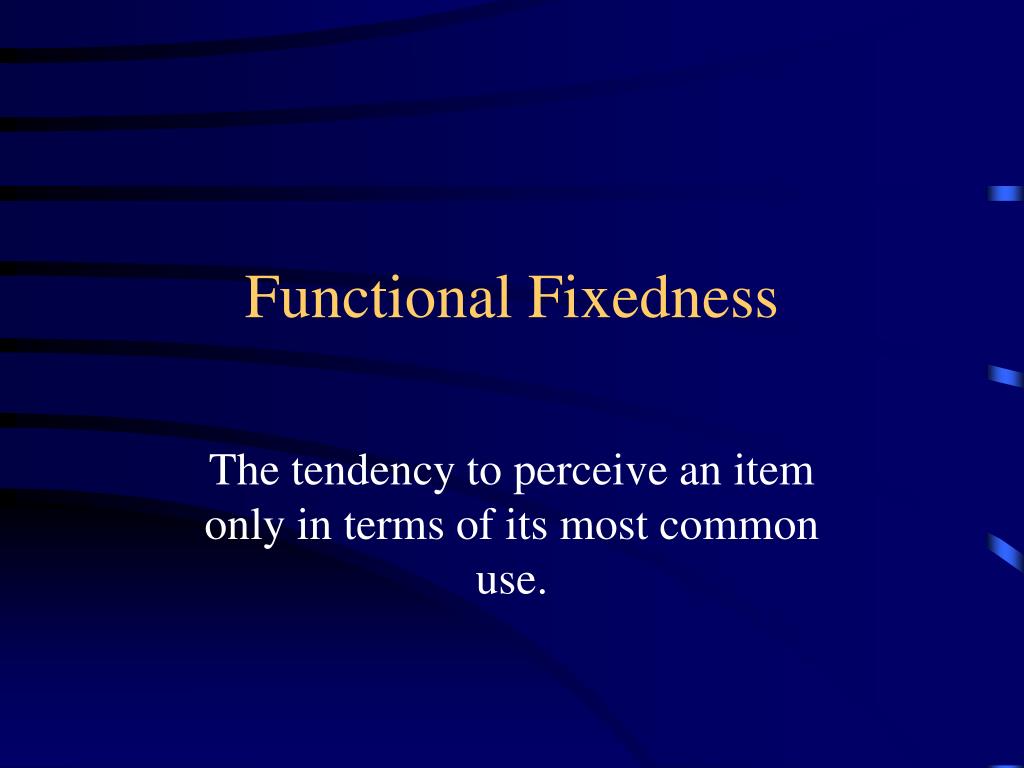
.jpg)
By eliminating the details of the problem, we allow ourselves to think more creatively about the solution. A practice referred to as “uncommitting,” describes simplifying a challenge and distilling it down to the problem’s essential elements. The first step to overcoming functional fixedness is done by first developing an awareness of the problem and simplifying it. Avoiding functional fixedness requires a conscious effort on the individual’s part towards promoting innovative ways of thinking and problem-solving. 3 Though individuals may be aware that their traditional method of solving a problem may be over-used and ineffective, they are typically still tempted to use the same problem-solving approach, due to their familiarity with it.Īs with many cognitive biases, functional fixedness can appear when tackling challenges in many different areas of life. Ironically, the more practice we have with identifying solutions to a problem, the more difficult it is to identify alternative or more creative solutions. 1įunctional fixedness has also proven to develop more as individuals gain more experience with problem-solving. 2 Younger participants present initial immunity to the bias due to their initial lack of problem-solving experience, allowing them to be more creative in their solutions. Meanwhile, as early as the age of 7, children tended to treat objects as they were meant to be used, already developing the bias. When studying functional fixedness in children, a study done at the University of Essex found that 5-year-old children showed no initial signs of the bias in early development when problem-solving. Researchers have found that functional fixedness is a bias that develops and strengthens as we age. They might not think of using an object like a hammer or a stapler, which is unconventional to its typical use.įunctional fixedness occurs due to strong pre-conceived notions that people develop regarding objects and how they must solve challenges using those objects. Instead of using a heavy object they can easily find in the room, they are fixated on their need for a paperweight. Imagine someone needs a paperweight but is unable to find one. As we age, though, this ease in innovation becomes more difficult for the average person.


What was once a chair or a cardboard box, children quickly turn into fortresses with pillows and blankets.

Commonly, functional fixedness is used to highlight this problem-solving barrier in instances such as when we strive to use an object for a purpose other than its traditional use.Īs children, many people may remember the ease of being creative and using their imagination to transform objects and their intended uses into something more. Consider the term “thinking outside the box.” Functional fixedness describes the difficulty we experience when we attempt to be creative in our problem-solving and our outside of the box thinking.


 0 kommentar(er)
0 kommentar(er)
